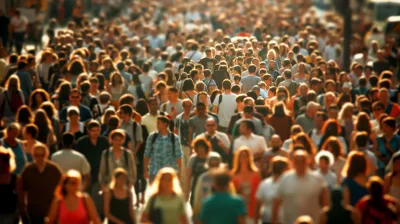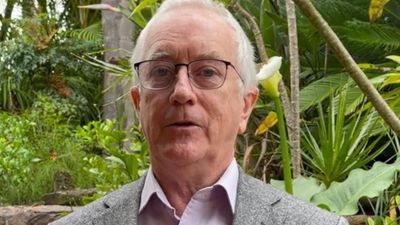None So Blind As Those Who Will Not See
Half a century of dealing with Neoclassical economists has taught me to expect them to have zero comprehension of the bleedingly obvious when the obvious conflicts with their established beliefs.
That experience was confirmed in spades last week, with the publication of my letter to the Proceedings of the National Academy of Sciences entitled “Estimates of economic and environmental damages from tipping points cannot be reconciled with the scientific literature” (Keen et al. 2022). That letter critiqued a paper published in Proceedings of the National Academy of Sciences just last year: “Economic impacts of tipping points in the climate system” (Dietz et al. 2021), written by the mainstream economists Simon Dietz, James Rising, Thomas Stoerk and Gernot Wagner. They replied to our critique with the note “Reply to Keen et al.: Dietz et al. modeling of climate tipping points is informative even if estimates are a probable lower bound” (Dietz et al. 2022), which dismissed every point we made (and some we didn’t).
The key point we made was bleedingly obvious. Their paper asserted that losing eight critical elements of the Holocene climate—(1) Arctic summer sea ice, the (2) Greenland and (3) West Antarctic Ice Sheets, (4) the Amazon rainforest, (5) the Atlantic Overturning Meridional Circulation (colloquially known as the Gulf Stream), (6) the organic matter currently trapped in the arctic permafrost, (7) the methane currently trapped under huge pressure and cold temperatures in the deep ocean (Ocean Methane Hydrates), and (8) the Indian monsoon—would reduce future consumption by a mere 1.4%:
Tipping points reduce global consumption per capita by around 1% upon 3°C warming and by around 1.4% upon 6°C warmings, based on a second-order polynomial fit of the data.
This was simply ridiculous. A planet missing those 8 critical elements of the Holocene environment would be totally unlike the one we currently inhabit. The idea that we could use “data” about this world’s climate to predict the GDP of that world was simply hubris. But they couldn’t see that. To our opening salvo that:
Earth last experienced 6°C warming in the Eocene epoch, ≈40 million years ago. Asserting consumption would be just 1.4% lower with all tipping points breached, i.e., critical elements of the current climate destroyed—while also being much larger than today—is inconceivable, and impossible to reconcile with scientific literature.
They replied
Keen et al. (1) argue the conclusions and procedures in ref. 2 do not make sense, seemingly taking it as given that the economic impacts of climate tipping points will be larger than our estimates (my emphasis). We view the evidence base for the economic consequences of tipping points as highly uncertain but believe our paper can serve as an important foundation and tool for exploring these issues.
Of course, we take it as given! As one correspondent on Twitter commented, “my 11-year-old could tell you: there is no economy left if we breach eight tipping points. We already risk losing everything.”

To give just one potential consequence of losing just one of those tipping points, Harvard University Professor of Chemistry James G Anderson argues that losing the Arctic summer sea ice will lead to a breakdown of the Ozone layer (Anderson and Clapp 2018). The mechanism is complex:
· The tipping of the Arctic turns it from a reflector of sunlight to an absorber;
· This leads to the three Tropospheric circulation cells collapsing into one;
· Water vapor that currently remains in the Troposphere gets transported into the Stratosphere;
· This water vapor will contain traces of Chlorine and Bromine;
· These chemicals will break down the Ozone layer, leading to much higher ultraviolet radiation;
· This will render the Northern Hemisphere far less hospitable to humans and other mammals.
This might sound pretty extreme, leading you to dismiss Anderson as a crackpot—except for the fact that, not only is he a Professor of Chemistry at Harvard, but he also played a key role in identifying the hole in the ozone layer over the Antarctic. His work led to the successful Montreal Protocol that drastically reduced the production of CFC gases. So, when it comes to the breakdown of the ozone layer—and how to avoid it—he’s the expert.
Aspects of Anderson’s analysis are disputed by some climate scientists, and the magnitude of the effects he predicts is also open to challenge. But this is not the sort of thing you test the hard way: if there’s even a small chance that Anderson is right, you avoid the situation completely.
This is why climate scientists insist that we should do everything we can to avoid tipping these critical elements on the Holocene environment in the first place: the impact of the change in the environment on the sustainability of human civilization is just too destructive—and incalculable—to contemplate. There are numerous papers by scientists saying that tipping points are “too risky to bet against” (Lenton et al. 2019), and we should do everything possible to avoid a 2°C increase in temperature since this could set off a cascade of tipping points (Steffen et al. 2018).
And yet here are economists claiming that tipping the 8 biggest tipping points would cause a 1% fall in far distant future consumption at 3°C over pre-industrial and 1.4% at 6°C. Frankly, this “lower bound”, as they put it, is indistinguishable from zero—which is why corporate managers like HSBC’s Stuart Kirk think there’s no climate risk at all.
If only they knew how dodgy the work of economists is—though since characters like Kirk have done economics degrees themselves, they’re probably as deluded as the academic economists who taught them.
Neoclassical economists, who think they’re defenders of capitalism, will actually be its accidental executioners.
Anderson, J. G., and C. E. Clapp. 2018. 'Coupling free radical catalysis, climate change, and human health', PHYSICAL CHEMISTRY CHEMICAL PHYSICS, 20: 10569-87.
Dietz, Simon, James Rising, Thomas Stoerk, and Gernot Wagner. 2021. 'Economic impacts of tipping points in the climate system', Proceedings of the National Academy of Sciences, 118: e2103081118.
———. 2022. 'Reply to Keen et al.: Dietz et al. modeling of climate tipping points is informative even if estimates are a probable lower bound', Proceedings of the National Academy of Sciences, 119: e2201191119.
Keen, Steve, Timothy Lenton, T. J. Garrett, James W. B. Rae, Brian P. Hanley, and M. Grasselli. 2022. 'Estimates of economic and environmental damages from tipping points cannot be reconciled with the scientific literature', Proceedings of the National Academy of Sciences, 119: e2117308119.
Lenton, Timothy, Johan Rockström, Owen Gaffney, Stefan Rahmstorf, Katherine Richardson, Will Steffen, and Hans Schellnhuber. 2019. 'Climate tipping points - too risky to bet against', Nature, 575: 592-95.
Steffen, Will, Johan Rockström, Katherine Richardson, Timothy M. Lenton, Carl Folke, Diana Liverman, Colin P. Summerhayes, Anthony D. Barnosky, Sarah E. Cornell, Michel Crucifix, Jonathan F. Donges, Ingo Fetzer, Steven J. Lade, Marten Scheffer, Ricarda Winkelmann, and Hans Joachim Schellnhuber. 2018. 'Trajectories of the Earth System in the Anthropocene', Proceedings of the National Academy of Sciences, 115: 8252-59.






